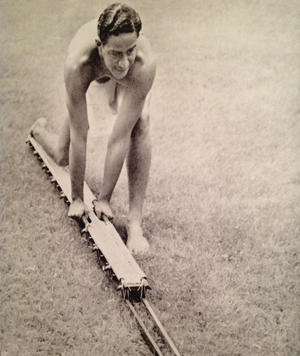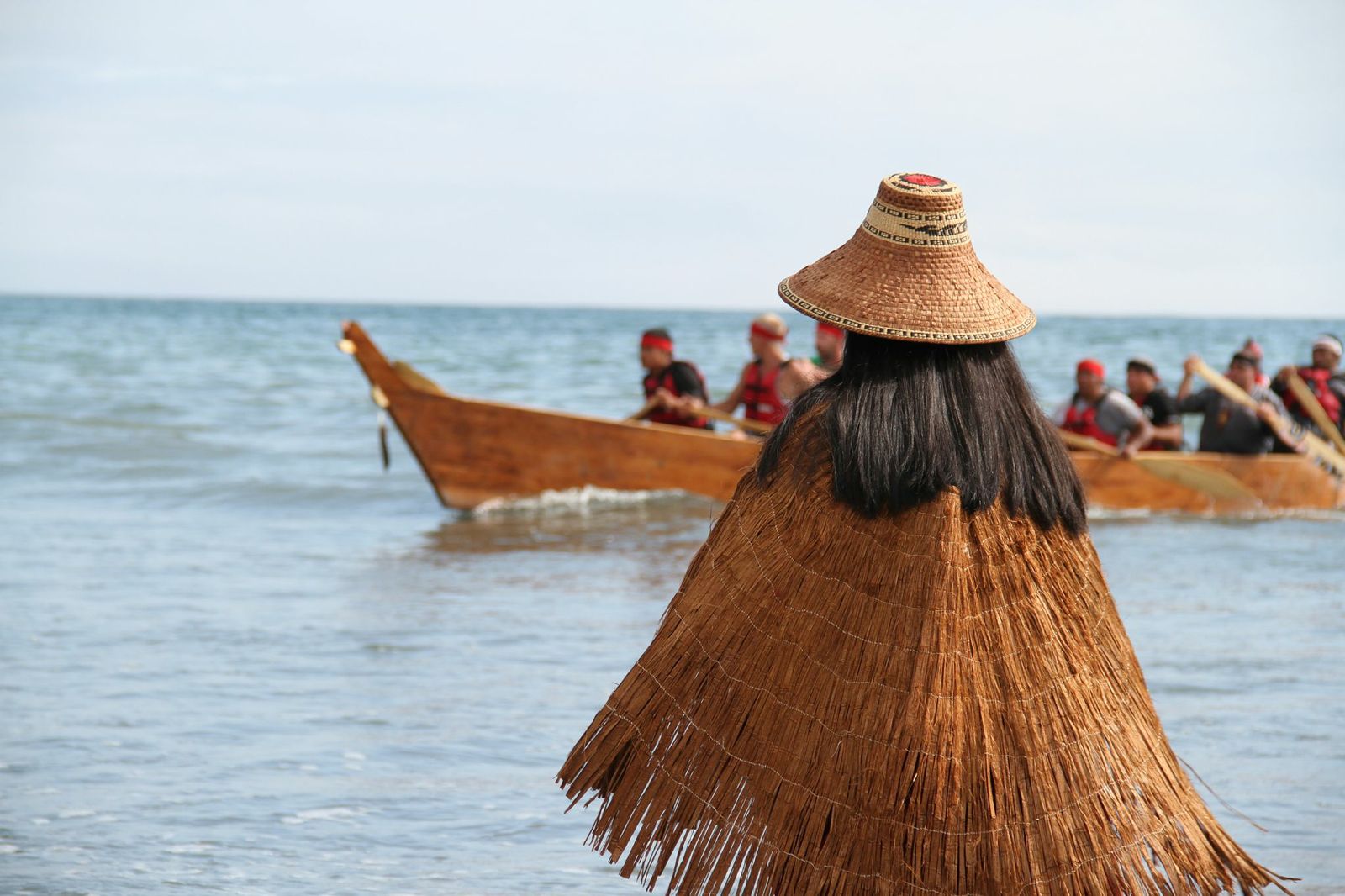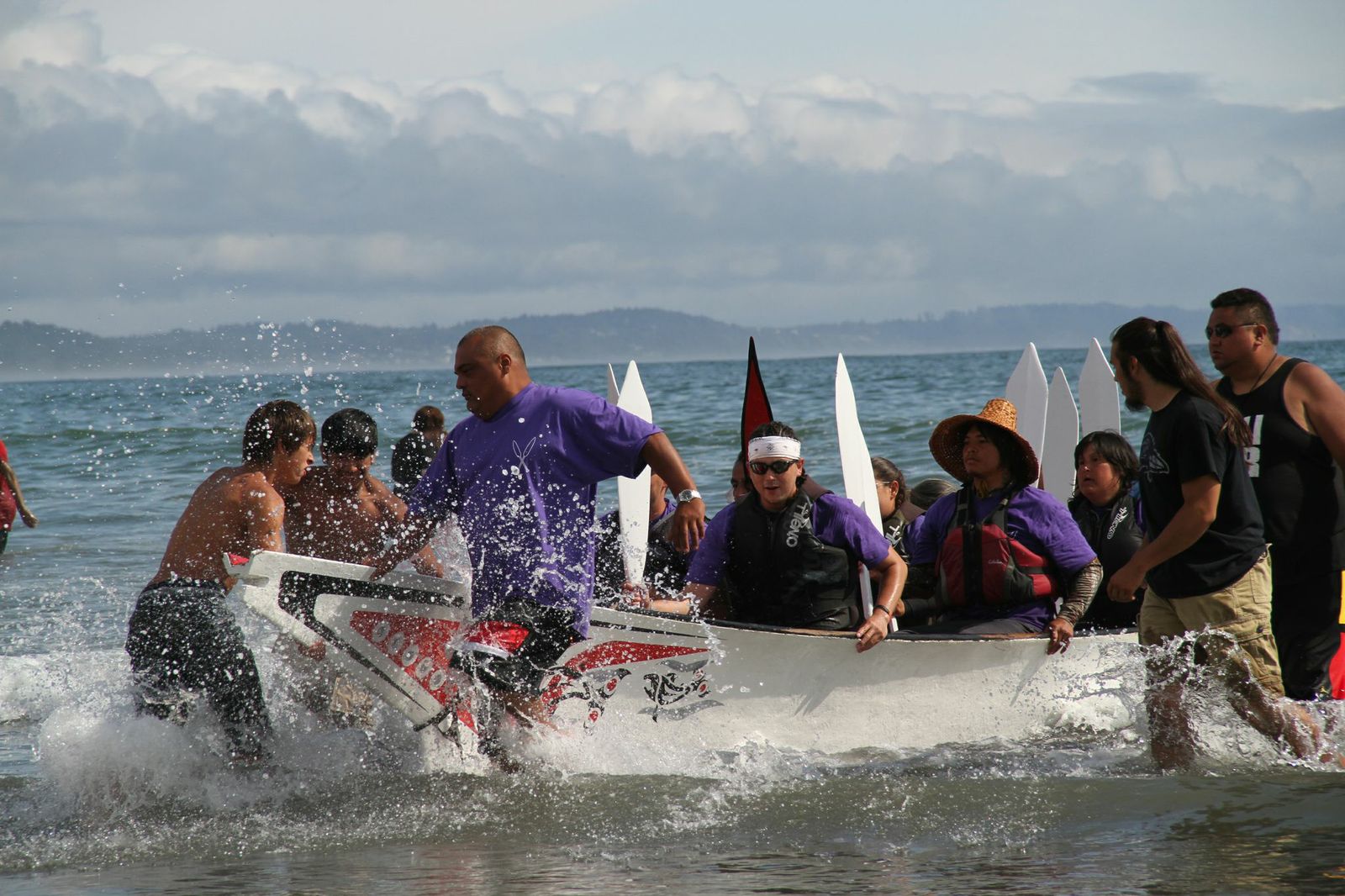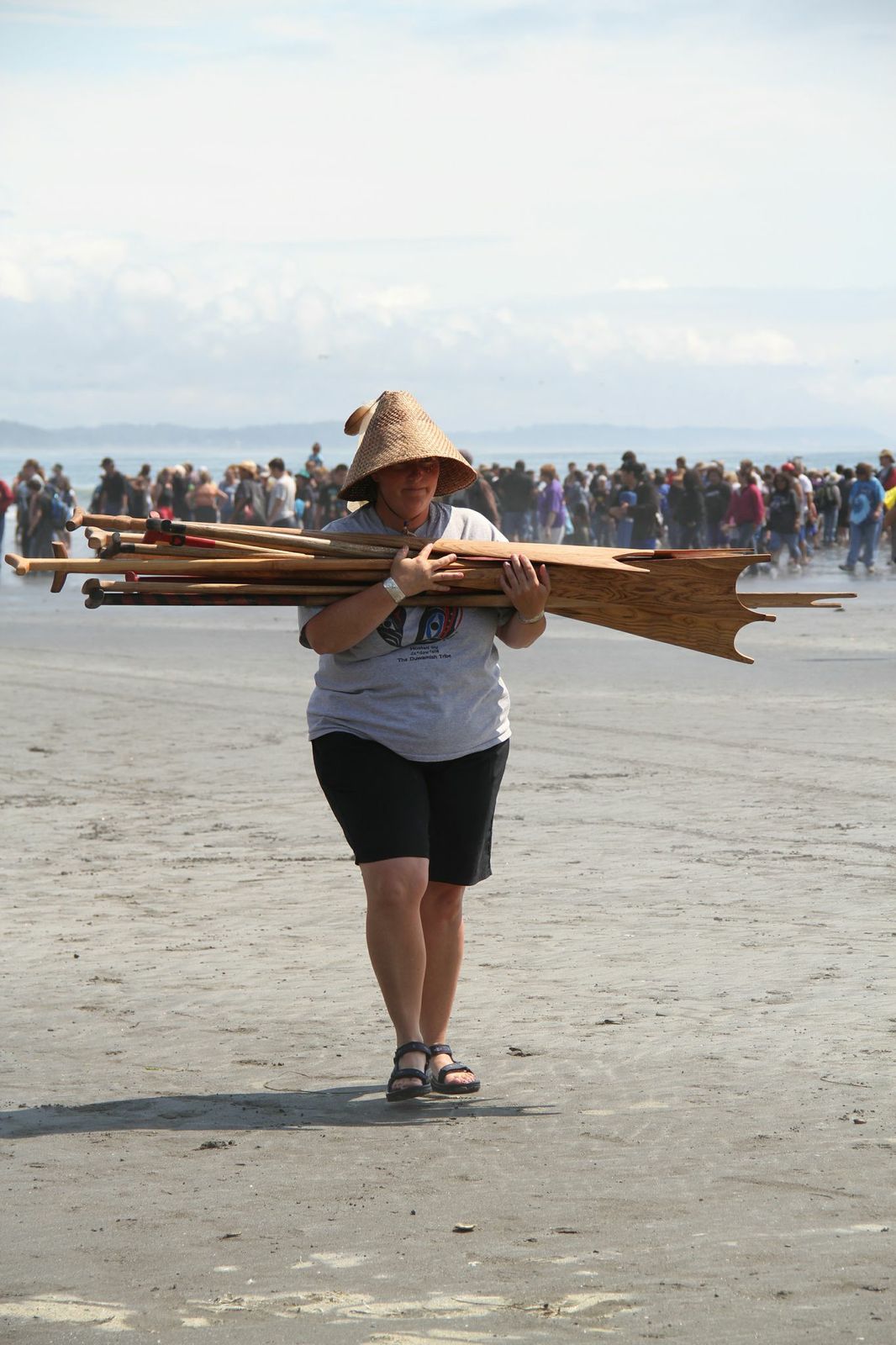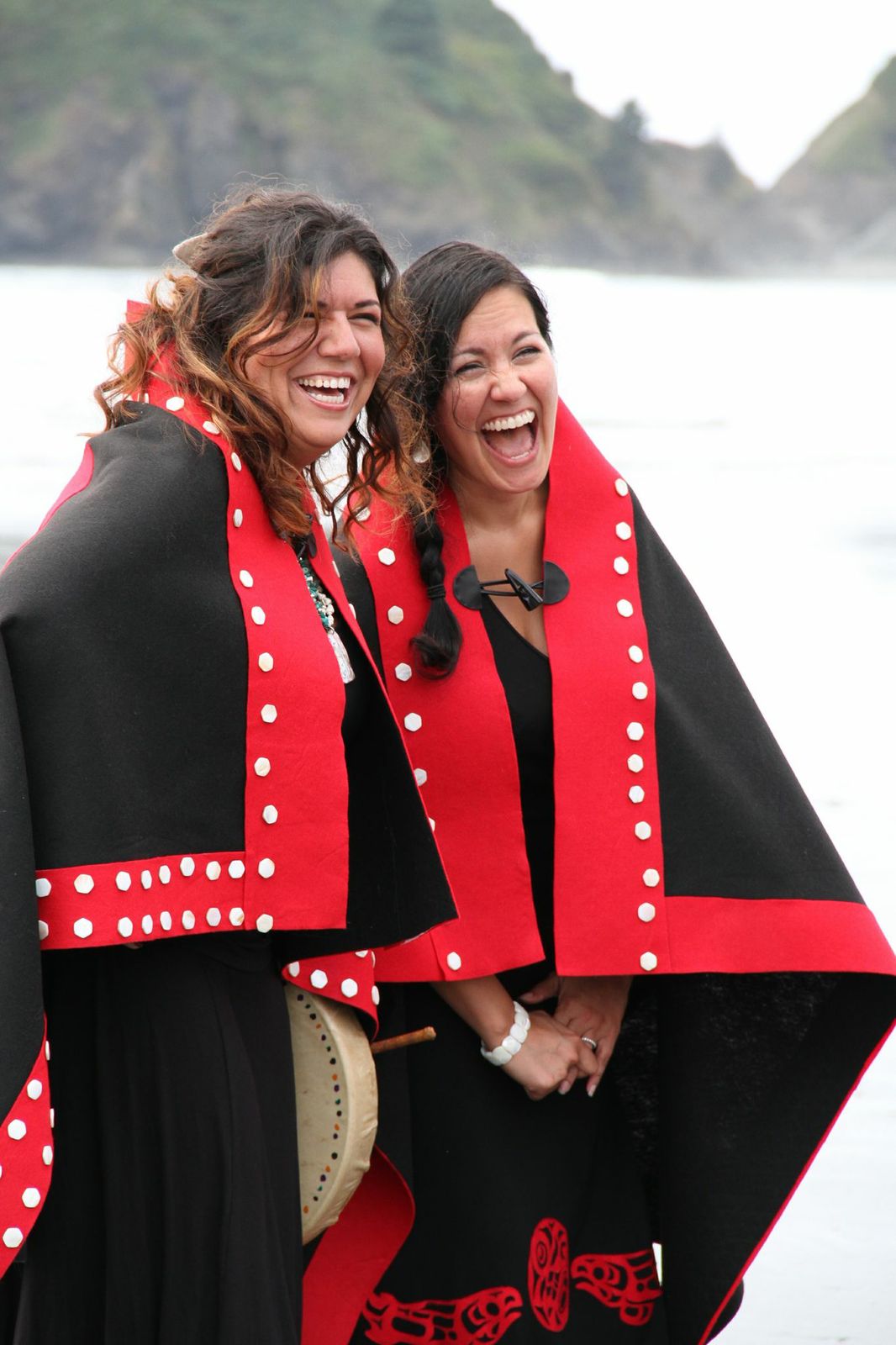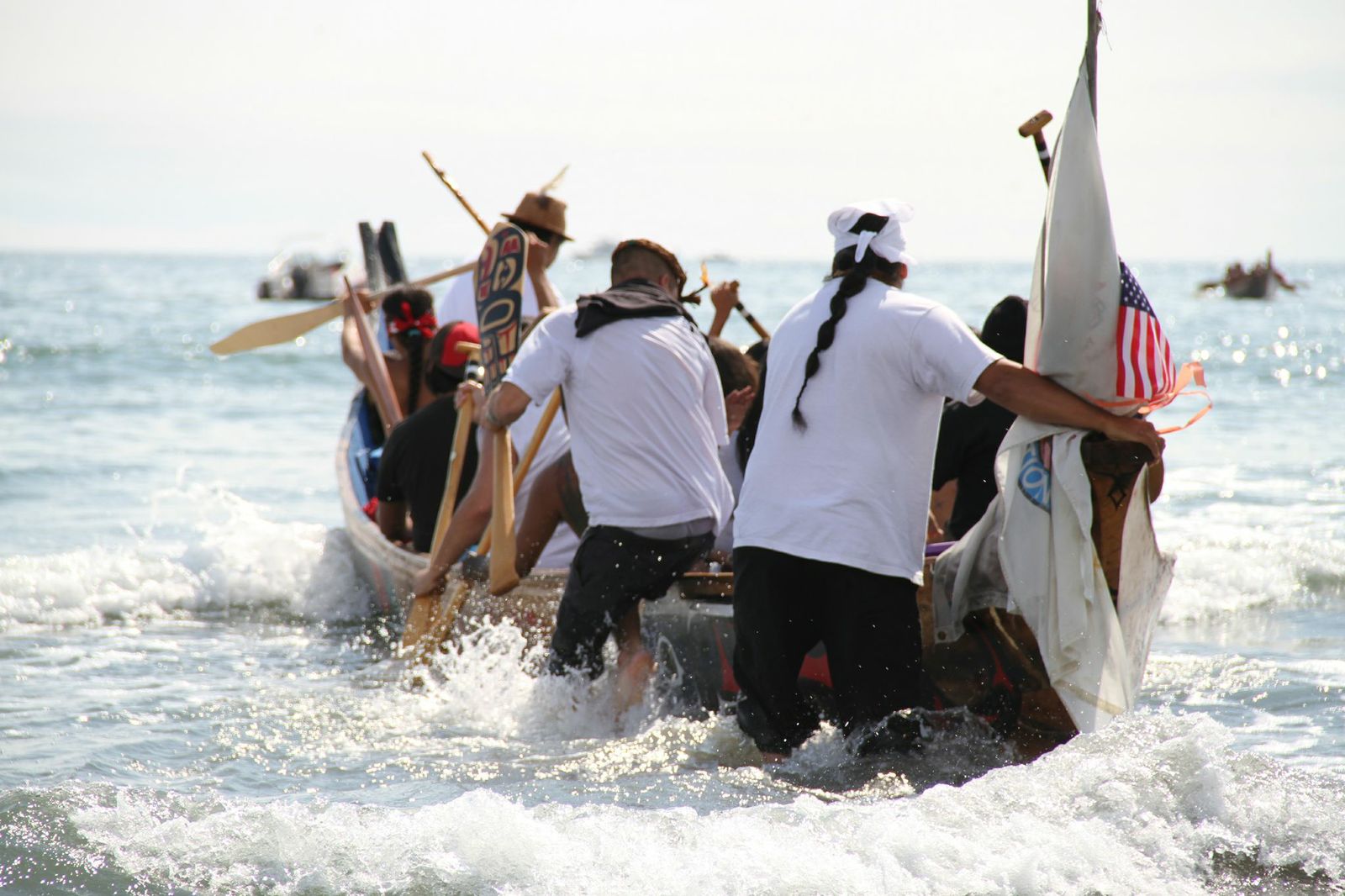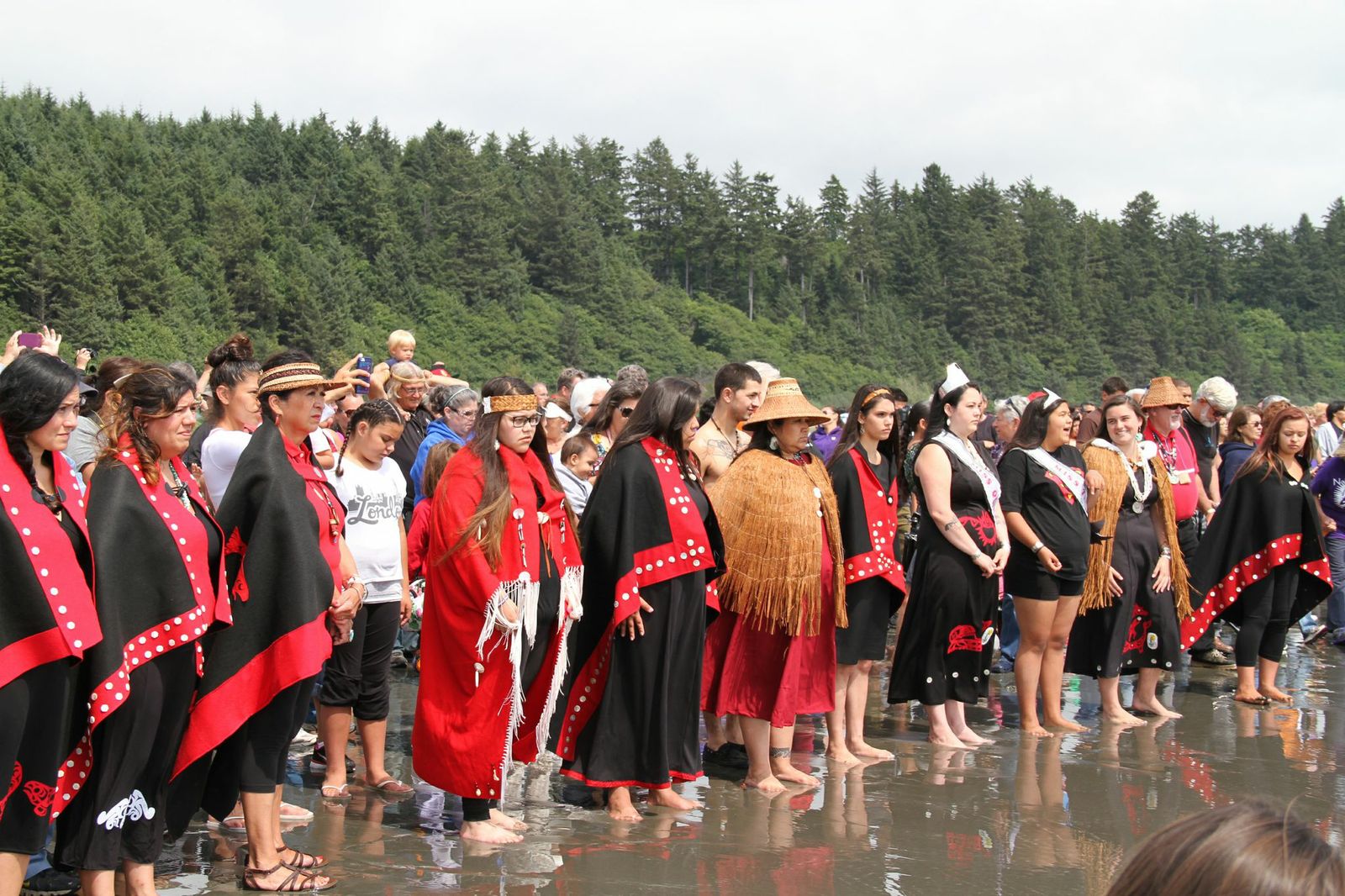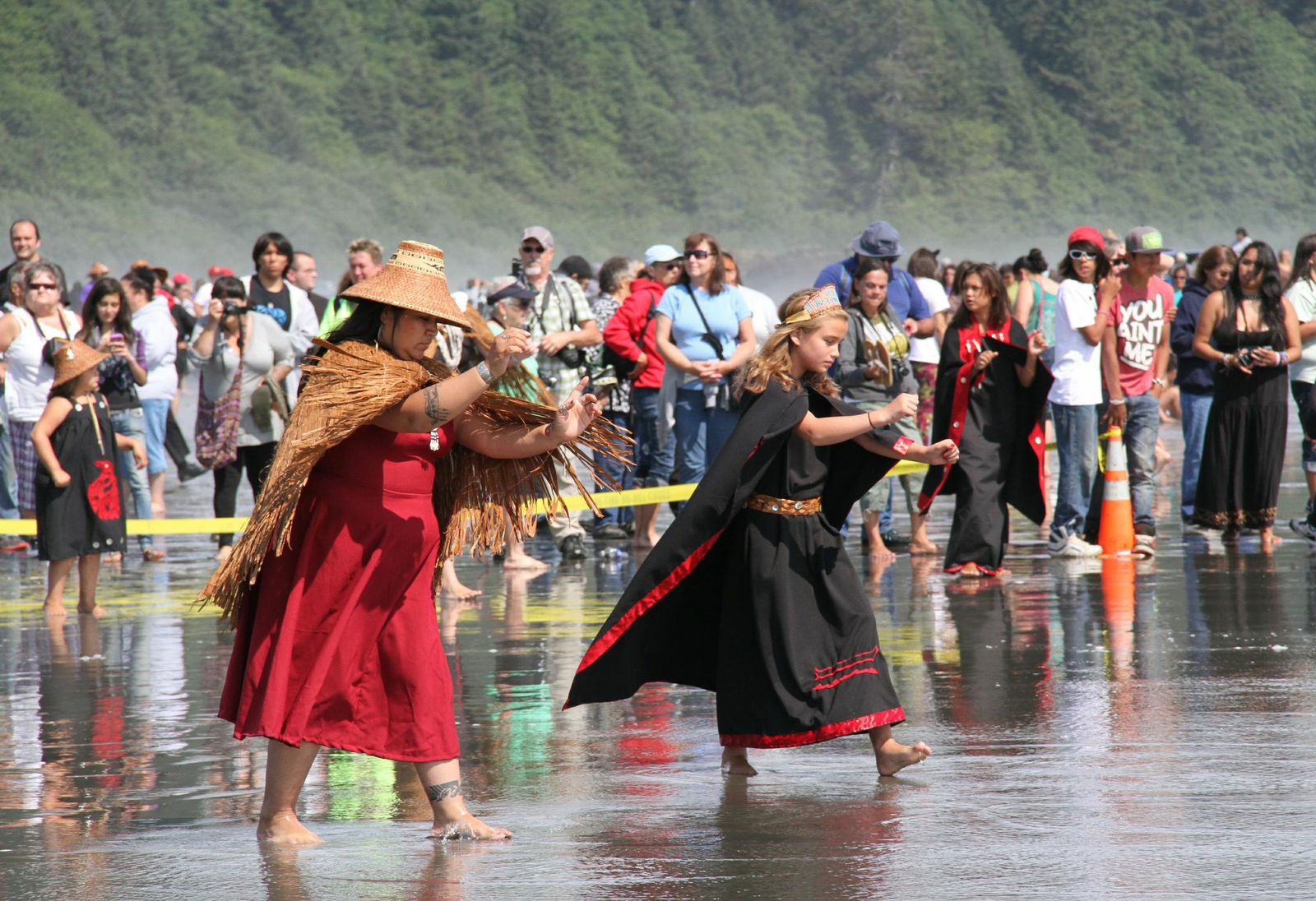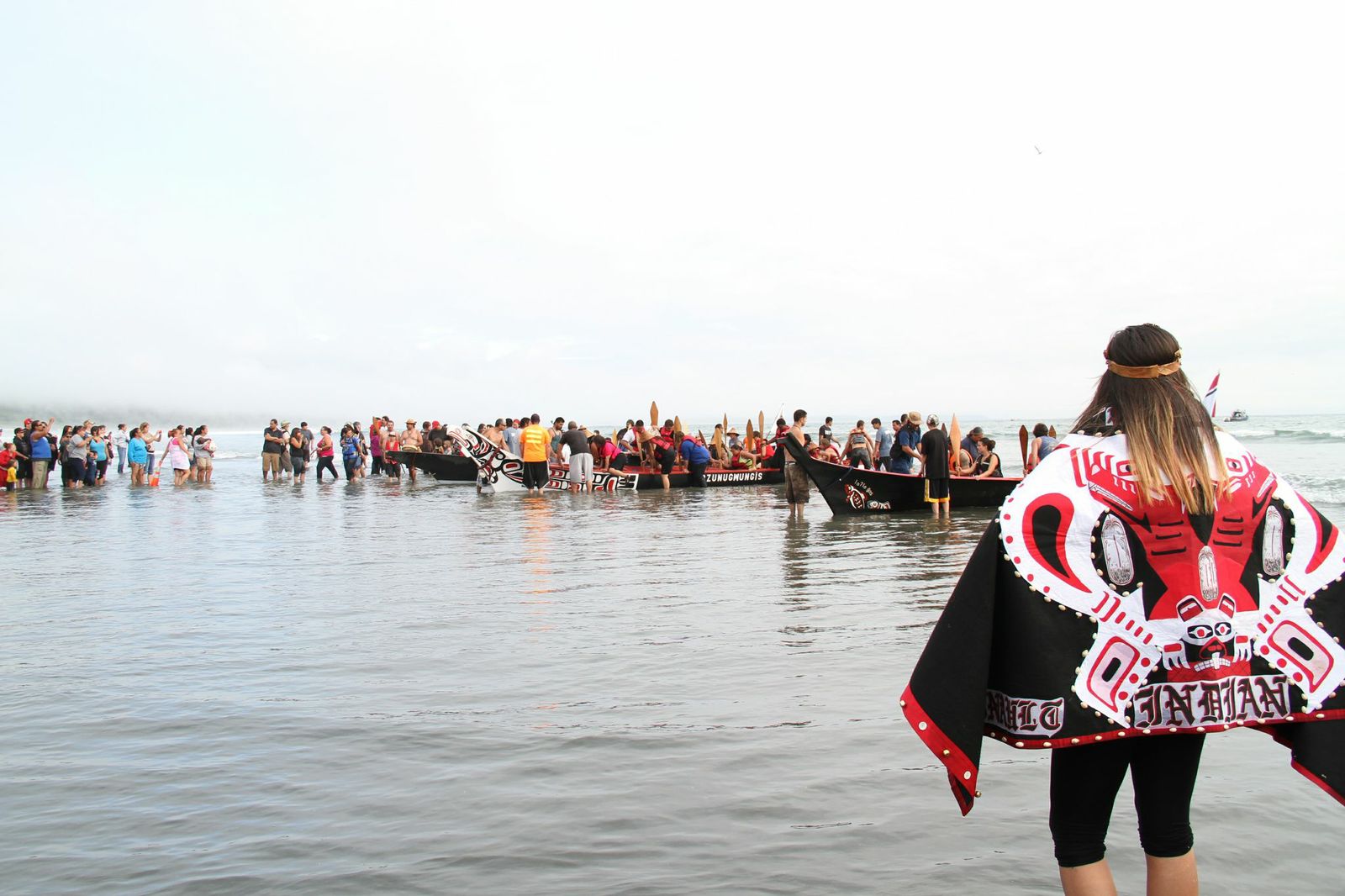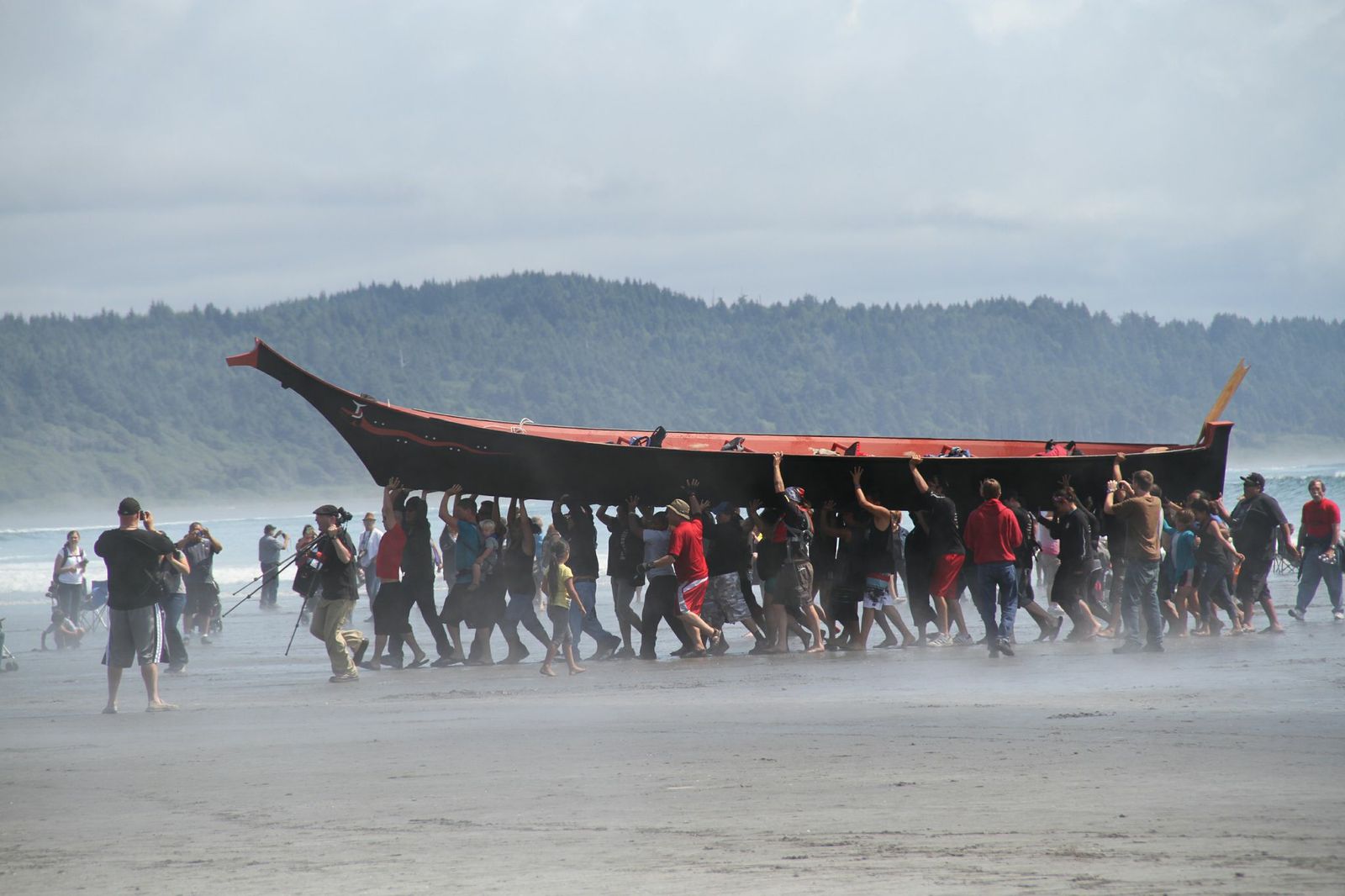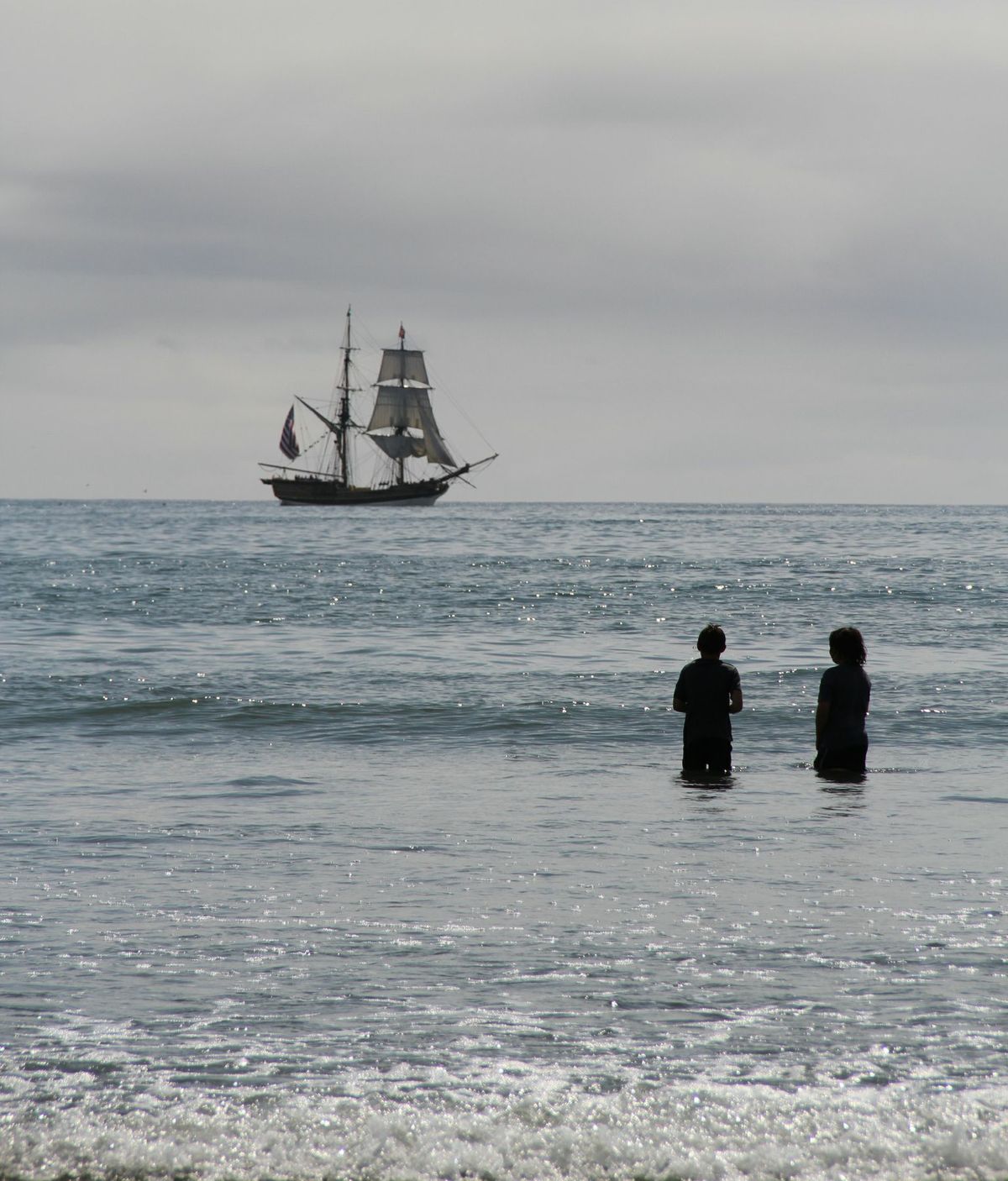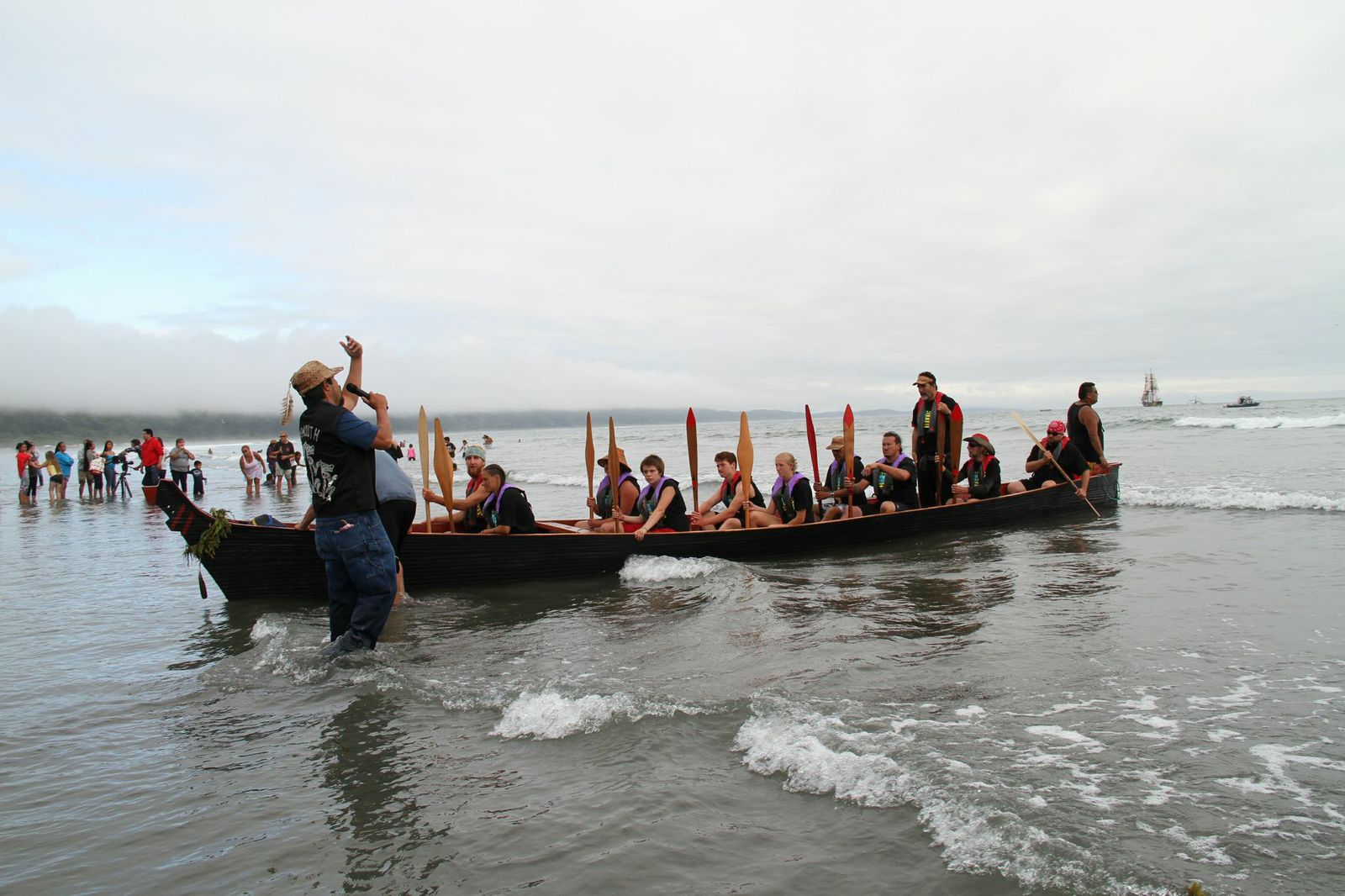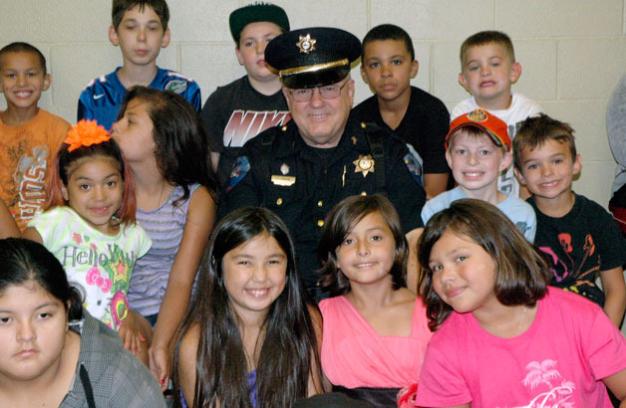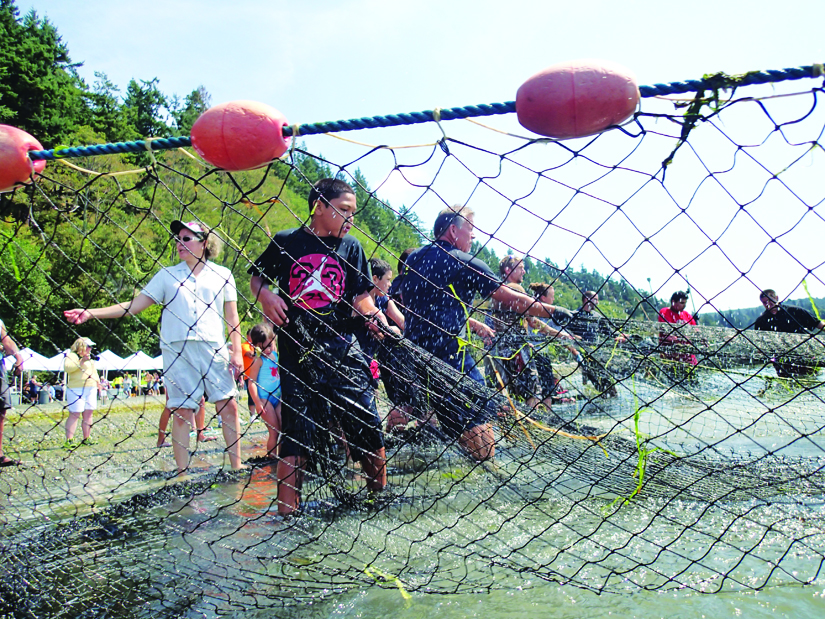
By Andrew Gobin, Tulalip News
“Let ‘er go!” a traditional fisherman’s call was heard from the beach as Glen Gobin sets his seine net at Spee-Bi-Dah, Saturday, August 10th.
For the eighth year, The Tulalip Tribes hosted the Spee-Bi-Dah community beach seine day. The annual event honors a time when families lived on the beach through the summer months to fish salmon, as well as teaches about traditional fishing methods and maintains Tulalip’s presence in the area. Today, Spee-Bi-Dah remains prime fishing grounds.

Gobin made six beach seine sets at Spee-Bi-Dah, along with his crew and those that eagerly jumped on the boat to help set the net. At the end of the day, five kings (Chinook salmon) were caught, ranging from 15lbs up to 24.5lbs. About 20 or so humpies (Pink salmon) were caught as well.
Beach seining is vital in keeping Tulalip’s history alive. Seining was one of many traditional fishing methods used by the tribes that comprise the present day Tulalip Tribes. The Spee-Bi-Dah beach seine event brings the community together, and those that know, teach others who want to learn about seining and our people’s history.
“I haven’t been here in years,” said tribal elder and former tribal fisherman, Phil Contraro, who spent the day watching each set, enjoying the company of old friends. “I really enjoyed the day.”

Many children were interested in the happenings, anxiously waiting to see what each set would bring in. The big-ticket item was getting to ride on the boat while making the set. There were a lot of new kids this year at Spee-Bi-Dah, though there were the regulars that couldn’t wait to get on the boat and try their hand using the splash pole, a technique that drives fish into the net.
The now annual gatherings originally were a three-day youth camp, first organized in 1998 by Don Hatch Jr. through the Tulalip Boys and Girls Club. Kids that attended camped on the beach, learning the history and having fun, but not actually fishing. Beach seining was included in 2003, which drew a greater interest in the camp in 2004.
“I remember camping on the beach, staying all weekend.” said Kyle Cullum, former employee at the Tulalip Boy and Girls Club. “But we didn’t fish until the last few years of camp.”
“I went to check out the camp and Penoke [Don Hatch] says to me, ‘we should have this be a community event,’” recalls former councilman Les Parks, who pushed to make it a community event in 2005. The vision for Tulalip to resume fishing at Spee-Bi-Dah had strong support from the tribal council. Today, he is proud to have championed the first community Spee-Bi-Dah event. “It’s vitally important for our community to come together like that, and just be together. To enjoy each other’s company and work together.
“As a child, I remember community clam bakes down below the long house. I’d like to see us come together at more community events.” said Parks, commenting on the lack of community events in recent years. “We have bingo, and Spee-Bi-Dah. Aside from those, there seems to be few other positive annual community events.”

Saturday’s event, along with the fishing, featured a seafood feast. Cy Fryberg Sr. cooked fish over a fire that morning at the beach. Oysters were grilled over the fire, and crab was boiled. Tony Hatch and his sons, Skyler and Drew, fired beach rocks to bake clams.
Every year, the Lushootseed Language Department and Youth Services offer activities to the kids, including face painting, water floaties, and beach toys. Great fun was had by all as people visited with friends and family, reminiscing of ‘the old days.’






